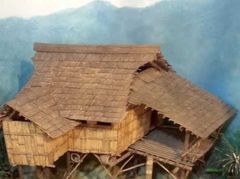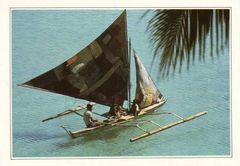![]()
![]()
![]()
Use LEFT and RIGHT arrow keys to navigate between flashcards;
Use UP and DOWN arrow keys to flip the card;
H to show hint;
A reads text to speech;
78 Cards in this Set
- Front
- Back
|
Science came from the Latin word _____ meaning “knowledge”. |
scientia |
|
|
It is the pursuit and application of knowledge. |
Science |
|
|
Technology comes from 2 Greek words _____ and _____. |
techné and logia |
|
|
“arts, skill, craft, technique, the means” |
techné |
|
|
“the study of” |
logia |
|
|
It is the application of organized scientific knowledge and skills to solve problems in life. |
Technology |
|
|
2 Components of Technology |
Physical and Informational |
|
|
Component of technology which consists of equipment. |
Physical Component |
|
|
Component of Technology which consists of know-how. |
Informational Component |
|
|
A group of people seen as a community within the confines of the same culture, beings socially united, and dependent on each other. |
Society |
|
|
An interdisciplinary study of the interaction of science and technology with society and culture. |
Science, Technology, and Society |
|
|
They used almanacs to record celestial events. Another important contribution was the calendar that had a complex system of interlocking cycles. The 2 main calendars were a ceremonial calendar (the Tzolk'in), a 260-day calendar of 13 numbers and 20 day names, and the vague calendar (the Haab) of 365 days. Their numerals had a base of 20 (vigesmal) system which was a bar-and-dot counting system. |
Maya |
|
|
Their calendar is divided into 12 months. They has 2 calendars: (1) the solar or daytime calendar, which has approximately 365 days for a year, which was used for economic activities; and (2) the lunar or nighttime calendar, with 328 days for a year, used to mark the date of festivals. |
Inca |
|
|
The largest and most powerful empire. Chinampa(floating garden) Chocolate and cacao Chewing gum |
Aztec |
|
|
Introduced the decimal number system, traditional cataract surgery and the process of refining sugar. |
India |
|
|
Invention of paper, compass, first country to create large scale transport drones, has the top most powerful supercomputer. |
China |
|
|
Refers to the replacement of human power with mechanical powers of some form. |
Mechanization |
|
|
Refers to the replacement of human thinking with computers and machines. |
Automation |
|
|
barter and kaingin system |
Pre-Spanish Period |
|
|
Manila galleons |
Spanish Colonial Period |
|
|
Free public education for all |
American Regime and Post-Commonwealth Period |
|
|
NRCP |
National Research Council of the Philippines |
|
|
Buy-and-sell business technology was encouraged. |
Japanese Regime |
|
|
The Philippines gained independence on July 4,1946 with Manuel Roxas as the first elected president. |
Period of the Independent Republic |
|
|
NSDB |
National Science Development Board |
|
|
PAGASA |
Philippine Atmospheric, Geophysical and Astronomical Services Administration |
|
|
PHIVOLCS |
Philippine Institute of Volcanology and Seismology |
|
|
PSHS |
Philippine Science High School System |
|
|
STII |
Science and Technology Information Institute |
|
|
SEI |
Science Education Institute |
|
|
TAPI |
Technology Application and Promotion Institute |
|
|
TRC |
Technology Resource Center |
|
|
This acts aims to provide for the regulation of all chemical substances that may pose threat to public health. |
Republic Act No. 6969 or the Toxic Substances and Hazardous and Nuclear Waste Control Act of 1990 |
|
|
This act provides a comprehensive and complex regulatory framework for regulating stationary and mobile sources of air pollution. |
Republic Act No. 8749 or the Clean Air Act |
|
|
The process of transmitting knowledge, skills, values, and behaviors. |
Education |
|
|
The field concerned with sharing science contents, processes, and pedagogy. |
Science Education |
|
|
The system that deal with the knowledge that an indigenous (native or local) community has accumulated over generations of living in a particular environment. |
Indigenous Knowledge System |
|
|
Refers to traditional science knowledge that includes practices, beliefs, and expertise handed down through generations of indigenous people by cultural transmission. |
Indigenous science |
|
|
On predicting weather: During New Year, when the cow or horse eats grass, it meant _____; when the goat repeatedly wail, it meant _____. |
drought, landslide |
|
|
Refers to the traditional art, crafts, tools, techniques, processes that are used by indigenous people to adapt to their environment for whatever purposes that serve them. |
Indigenous technologies |
|
|
The term ____ ____ is the modern connotation of the Greek term Eudaimonia, which was used by _____ to also mean doing well and living well, being happy or to be of good spirit. |
Human flourishing, Aristotle |
|
|
He wrote critical books titled Being and Time)(1927) and Question Concerning Technology (1977). |
Martin Heidegger |
|
|
To him, techné meant a ___ __ ___. |
Revelation of something |
|
|
Refers to a mode of knowing. |
Technology |
|
|
To refer to all-encompassing essence of technology. |
Gestell(enframing) |
|
|
A way of revealing. |
Technology |
|
|
Alètheuein means _____ |
To discover |
|
|
Alètheia means _____ |
Unclosedness |
|
|
It exists only in relation and is inaccessible for human beings. |
Reality |
|
|
Nichomachean Ethics |
Aristotle |
|
|
The Virtue of Selfishness Objectivism |
Ayn Rand |
|
|
Levels of public good |
Gripaldo |
|
|
The Vedas |
Hinduism |
|
|
Eudaimonia“It's much better to suffer wrong than to do wrong” |
Socrates |
|
|
Hedonism |
Epicurus |
|
|
Stoicism |
Seneca |
|
|
The Analects The Golden Rule |
Confucius |
|
|
Four Noble Truths Eightfold Paths |
Buddha |
|
|
The Republic |
Plato |
|
|
Love God and love your neighbor. |
Jesus |
|

|
Panabas |
|

|
Batangas Knife |
|

|
Barung and sheath |
|

|
Gunong |
|

|
Kampilan |
|

|
Ivatan House |
|

|
Torogan House |
|

|
Stilt House |
|

|
Aeta Shelter |
|

|
Higaonon Tree House |
|

|
Mandaya House |
|

|
Kudyapi |
|

|
Palendag |
|

|
Gambang |
|

|
Gandingan |
|

|
Balangay |
|

|
Karakoa |
|

|
Vinta |

